- Clone
- L5 (See other available formats)
- Regulatory Status
- RUO
- Other Names
- FLAG tag
- Isotype
- Rat IgG2a, λ
- Ave. Rating
- Submit a Review
- Product Citations
- publications
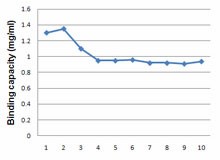
-

Anti-DYKDDDDK tag affinity resin (L5-agarose) retains binding capacity even after 10 rounds of purification and elution. -

Anti-DYKDDDDK tag affinity resin (L5-agarose) retains binding capacity even after 10 rounds of purification and elution.
The DYKDDDDK tag, commonly referred to as Sigma®'s FLAG® Tag, is often used as a protein modification in order to simplify the labeling and detection of proteins.This unique amino acid sequence allows for specific antibody detection in western blotting, immunoprecipitation, and immunostaining techniques.Due to the short sequence, this modification is not likely to affect the structure or function of the modified proteins.
Product DetailsProduct Details
- Verified Reactivity
- Epitope tag
- Reported Reactivity
- Species independent
- Antibody Type
- Monoclonal
- Host Species
- Rat
- Immunogen
- DYKDDDDK-tagged mouse Langerin
- Formulation
- 50% anti-DYKDDDDK-tag (L5) antibody conjugated resin is supplied in 1X PBS and 0.09% NaN3. The volume specified for each catalog number indicates the volume of resin included.
- Preparation
- The antibody was purified by affinity chromatography.
- Storage & Handling
- Upon receipt, store between 2°C and 8°C. The unopened product is stable for one year upon arrival.
- Application
-
IP, Purification of DYKDDDDK-tagged fusion proteins from cell lysates - Quality tested
- Recommended Usage
-
Resin binding capacity is greater than 0.8 mg/mL.
- Application Notes
-
The L5 clone has been demonstrated to have 2-8 fold better sensitivity in WB than another commonly used antibody clone, M2.
-
Application References
(PubMed link indicates BioLegend citation) -
- Park SH, et al. 2008. J Immunol Methods. 331:27.
- Moon SH, et al. 2010. J. Biol Chem. 285:12935. PubMed
- Sasaki M, et al. 2011. J. Biol Chem. 286:39370. PubMed
- Sonder SU, et al. 2012. J Immunol. 188:5906. PubMed
- Jiang Y, et al. 2013. Int Immunol. 25:235. PubMed
- Zuo X, et al. 2014. PLoS One. 9:84748. PubMed
- Toyo-Oak K, et al. 2014. J Neurosci. 34:12168. PubMed
- Product Citations
-
- RRID
-
AB_10962945 (BioLegend Cat. No. 651501)
AB_10959657 (BioLegend Cat. No. 651502)
AB_10962692 (BioLegend Cat. No. 651503)
Antigen Details
- Biology Area
- Cell Biology
- Antigen References
-
1. Einhauer A. 2001. J. Biochem. Biophys. Methods. 49:455.
2. Knappik A and Pluckthun A. 1994. Biotechniques. 17:754. - Gene ID
- NA
- UniProt
- View information about DYKDDDDK on UniProt.org
Related Pages & Pathways
Pages
Related FAQs
- Does a relatively low pH such as 4.5 dissociate the L5 antibody from the resin?
- pH4.5 should not diassociate the antibody from the resin. But this pH could affect the binding of the FLAG-tagged target to the L5 antibody.
Other Formats
View All DYKDDDDK Reagents Request Custom Conjugation| Description | Clone | Applications |
|---|---|---|
| Purified anti-DYKDDDDK Tag | L5 | WB,IP,ICC,ELISA,FC,Purification |
| Anti-DYKDDDDK Tag (L5) Affinity Gel | L5 | Purification,IP |
| APC anti-DYKDDDDK Tag | L5 | FC,ICFC |
| PE anti-DYKDDDDK Tag | L5 | FC,ICFC |
| Direct-Blot™ HRP anti-DYKDDDDK Tag | L5 | WB |
| Alexa Fluor® 594 anti-DYKDDDDK Tag | L5 | ICC |
| Alexa Fluor® 647 anti-DYKDDDDK Tag | L5 | ICC |
| Alexa Fluor® 488 anti-DYKDDDDK Tag | L5 | ICC |
| PE/Cyanine7 anti-DYKDDDDK Tag | L5 | FC |
| Brilliant Violet 421™ anti-DYKDDDDK Tag | L5 | FC |
| PerCP/Cyanine5.5 anti-DYKDDDDK Tag | L5 | FC |
| Ultra-LEAF™ Purified anti-DYKDDDDK Tag | L5 | WB,IP,ICC,ELISA,FC,Purification |
| PE/Dazzle™ 594 anti-DYKDDDDK Tag Antibody | L5 | FC |
| TotalSeq™-B1129 anti-DYKDDDDK Tag | L5 | PG |
| TotalSeq™-A1129 anti-DYKDDDDK Tag | L5 | PG |
| TotalSeq™-C1129 anti-DYKDDDDK Tag | L5 | PG |
Customers Also Purchased
Compare Data Across All Formats
This data display is provided for general comparisons between formats.
Your actual data may vary due to variations in samples, target cells, instruments and their settings, staining conditions, and other factors.
If you need assistance with selecting the best format contact our expert technical support team.
-
Purified anti-DYKDDDDK Tag
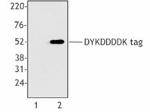
Cell extracts from untransfected 293T cells (lane 1) or 293T... -
Anti-DYKDDDDK Tag (L5) Affinity Gel
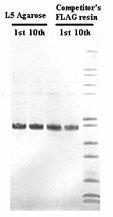
Anti-DYKDDDDK tag affinity resin (L5-agarose) retains bindin... 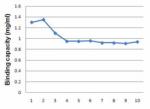
Anti-DYKDDDDK tag affinity resin (L5-agarose) retains bindin... -
APC anti-DYKDDDDK Tag
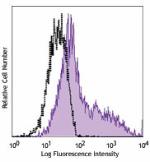
HEK-293T cells transfected with plasmid encoding a DYKDDDDK-... -
PE anti-DYKDDDDK Tag
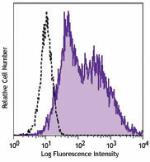
F-SIK2-FLAG transfected HEK293 cells were fixed and permeabi... -
Direct-Blot™ HRP anti-DYKDDDDK Tag
50 ng of recombinant GST protein tagged with the DYKDDDDK pe... -
Alexa Fluor® 594 anti-DYKDDDDK Tag

HeLa cells transiently transfected with DYKDDDDK tag fused p... -
Alexa Fluor® 647 anti-DYKDDDDK Tag

HeLa cells transiently transfected with DYKDDDDK tag fused p... 
HeLa cells transiently transfected with DYKDDDDK tag fused p... -
Alexa Fluor® 488 anti-DYKDDDDK Tag

HeLa cells non-transfected (A) or transfected with DYKDDDDK ... -
PE/Cyanine7 anti-DYKDDDDK Tag
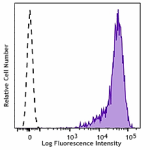
DYKDDDDK tag-transfected cells were stained with anti-DYKDDD... -
Brilliant Violet 421™ anti-DYKDDDDK Tag
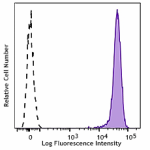
DYKDDDDK tag-transfected cells were stained with anti-DYKDDD... -
PerCP/Cyanine5.5 anti-DYKDDDDK Tag
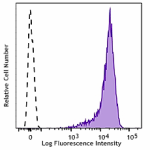
DYKDDDDK tag-transfected cells were stained with anti-DYKDDD... -
Ultra-LEAF™ Purified anti-DYKDDDDK Tag

Cell extracts from untransfected 293T cells (lane 1) or 293T... -
PE/Dazzle™ 594 anti-DYKDDDDK Tag Antibody
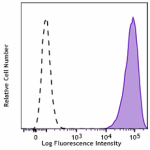
DYKDDDDK tag-transfected cells were stained with anti-DYKDDD... -
TotalSeq™-B1129 anti-DYKDDDDK Tag
-
TotalSeq™-A1129 anti-DYKDDDDK Tag
-
TotalSeq™-C1129 anti-DYKDDDDK Tag

 Login / Register
Login / Register 




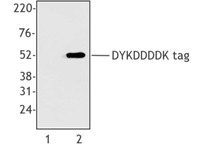


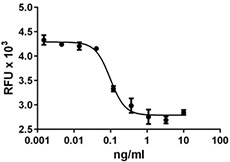




Follow Us